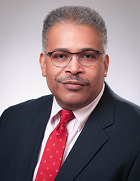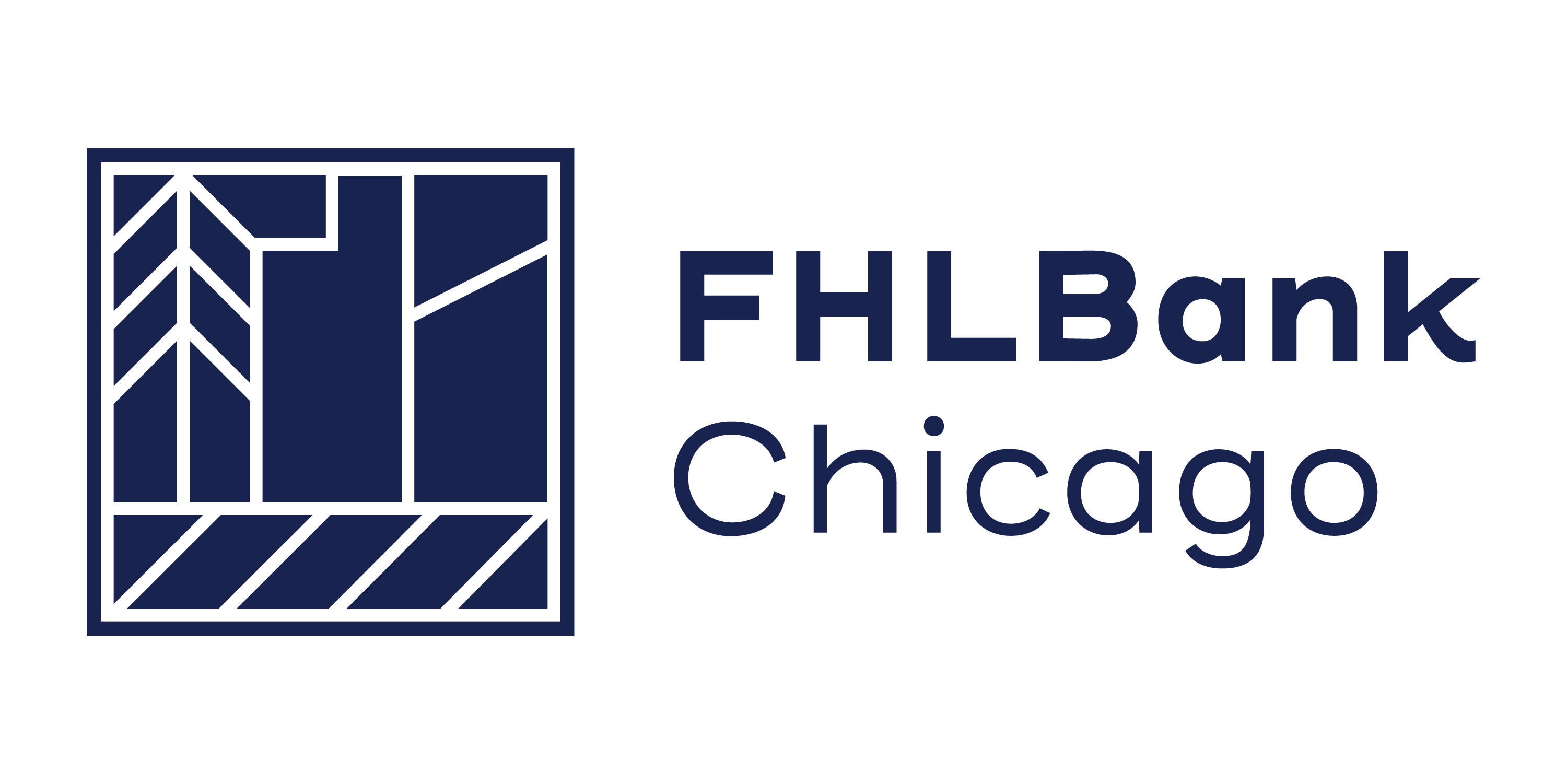Highlights of the 2021 FHLBank Insurance Conference
June 23, 2021
Overview
The second virtual and ninth annual FHLBank Insurance Conference took place on June 15, 2021. The conference consisted of five informative sessions featuring industry guest speakers and FHLBank members who spoke about the economy, member usage of the FHLBank system, investments, and the political environment.
1. FHLBank Member Usage Panel
- Moderated by Mike Siegel, Global Head, Goldman Sachs Insurance Asset Management (GSAM) and GSAM Liquidity Solutions
- Panalists: Brian Borakove, SVP Deputy CFO, CUNA Mutual Group | Michael Cole, Sr. Director and Assistant Treasurer, Equitable Financial | Peter Guastamachio, CFO, State Compensation Insurance Fund | David Ratliff, Director-Investments and Treasury, Premera Blue Cross
Liquidity needs an entry point for FHLBank membership.
While many of the panelists joined the Bank in search of easily accessible low cost liquidity, they have come to realize that it is just the tip of the iceberg in terms of the beneficial services offered by FHLBanks. The panelists pointed out that FHLBanks offers substantial borrowing capacity without charging unused line fees, common with conventional lines of credit. Since joining the FHLBank system, some panelists have expanded their usage to include spread investing for increased investment income. For health insurers, access to emergency liquidity remains their core focus since there are regulatory restrictions on insurer profitability, which limits the size of their FHLBank spread program. The multiline panelist also indicated that they were able to use FHLBank to access daily liquidity for their significant hedging program. They were able to address margin calls related to historic variable and equity indexed books that needed to be answered due to the market volatility.
Low borrowing cost and ease of use are critical factors.
The dividend benefits, speed of execution, and a wide range of tenor and structure options allow insurers to easily match fund investments and opportunistically purchase and warehouse assets before premiums come in. Some insurers reserve a large part of their FHLBank capacity as dry powder for emergency liquidity and catastrophic events to avoid a forced sale of investments at a loss. A panel member indicated that FHLBank borrowings are a key component of the asset liability management efforts to strategically extend their investment portfolio duration. The program consists of buying and pledging long-term Treasuries and treasury inflation-protected securities (TIPS) that are funded by rolling shorter term FHLBank advances.
Insurance members benefit by keeping cash levels at a minimum.
Panelists described using the FHLBank for shorter-term liquidity as a perfect fit with Health and Property and Casualty insurers’ shorter liabilities and investment portfolios. They emphasized that FHLBank short-term borrowings can fill-in the gaps of their 30-day cash flow forecasts, allowing them to reduce their cash on hand. The reduction in cash has helped insurance members in all sectors maintain a larger percentage of investments in less liquid assets that can produce higher investment returns. A Life insurer panelist indicated that using the FHLBank for daily liquidity in their intercompany cash pool has allowed them to manage the company effectively at a negative cash position.
Life companies used FHLBank funding agreements to maximize investment returns.
FHLBank funding agreements have helped life insurers stay within overall corporate financial and operating leverage targets. The panelists said that in general regulators view FHLBank funding agreement programs as a safe, non-callable, leveraged investment funding source as long as overall program size is reasonable. A life insurance panelist indicated they use a low cost FHLBank funding agreement program in combination with their funding agreement backed note program to increase investment returns. The FHLBank program is used to buy assets that are FHLBank collateral eligible and the funding agreement backed note program is used to buy assets that are not FHLBank collateral eligible.
Use FHLBank advances to match fund SOFR based assets.
Several panelists own SOFR based assets and have used SOFR based advances to match the exposure on the liability side. A few of them mentioned taking test advances to evaluate the mechanics of SOFR advances in their own systems.
Use of FHLBank letters of credit and Community Advances are lower in cost relative to traditional sources.
Panel members discussed using letters of credit for operating facility leases and reinsurance arrangements. Panelists also considered funding a part of their commercial mortgage loan portfolio with FHLBank advances that qualify for rate discounts under FHLBank’s Community Advance program.
Panelists borrowed several times their pre-pandemic levels.
Panelists agreed that the onset of the COVID-19 pandemic increased their need for FHLBank liquidity. The increased liquidity borrowings helped to mitigate heightened uncertainty when normal premiums and cash flow patterns were disrupted. Some panel members took comfort knowing they would not be forced to sell securities due to the availability of FHLBank funds. The health insurance panelist used FHLBank liquidity even before it was needed to ensure the execution and availability of funds for claims payments. The multiline panelist was able to leverage their FHLBank early in the pandemic to take advantage of the market dislocation. They purchased an extra $500 million in assets when spreads blew out and determined that FHLBank was the best avenue to fund the assets.
Use of illiquid forms of collateral was prioritized to secure borrowing capacity.
Although the collateral pledged by panel members varies based on investment portfolio composition and philosophy, panel members consistently pledged less liquid parts of their portfolio first because it does not impact their liquidity ratios. For example, panelists prefer to pledge commercial mortgage loans, as a broad, stable or permanent part of their collateral base that is used for spread investing and liquidity borrowing. More liquid collateral, such as mortgage backed securities, are pledged if commercial mortgage loans are not available or a rapid increase in advances is needed. If an outside investment manager is used, coordination is key.
To watch an on-demand recording of this session, click here.
2. After the Storm: Investing in 2021 and Beyond
- Dr. David Kelly, Chief Global Strategist, J.P. Morgan Asset Management
We should be able to move beyond the pandemic as we go through the summer and into the fall. However, there is economic uncertainty stemming from the actions of policy makers
The U.S. is rapidly moving towards herd immunity due to the combination of infections and vaccinations. Dramatic fiscal stimulus implemented over a short period of time has resulted in national debt at 108% of GDP. While we all hope for a recovery that scales at a rapid pace, it is critically important to bring the economy to a soft landing without overheating it and pushing interest rates too high.
The expectation of upwards pressure on wages and spending could create inflationary pressures.
As the economy lurches back, the unemployment rate remains high. COVID-19 has most affected workers who were already vulnerable. Enhanced unemployment benefits, which provide benefits close to or exceeding pre-pandemic wages, have made it difficult for small businesses to find workers. Emergency unemployment benefits are set to expire by end of the summer, a time when the economy is set to fully reopen, which should help lower the unemployment rate.
Finally, the current crisis has forced organizations to adapt rapidly and scale their technology and digital delivery. This rapid migration to digital technologies will continue into the recovery and accelerate growth opportunities.
To watch an on-demand recording of this session, click here.
3. Why Diversity Beyond Your Investment Portfolio Is a Good Thing
- Dan Houston, Chairman, President and CEO, Principal Financial Group | Patricia McKenna, VP, Investments and Assist. Treasurer, AEGIS Insurance Services, Inc. | Laura Sarlo, Director for Sovereign Research, Liberty Mutual Investments
Two Insurance Women’s Investment Network (IWIN) members talked about the importance of the organization to their career development by providing great support, positive mentoring, and a spirit of sharing information that allowed them to deepen their insurance and investment knowledge beyond their individual companies.
A panelist relayed how the diversity philosophy and training of their organization are reflected in its Board, leadership, and workforce and provides a competitive advantage.
To watch an on-demand recording of this session, click here.
4. 156 Days into a New Administration
- Michael Medeiros, CFA, Managing Director and Macro Strategist, Wellington Management
The presenter forecasts inflation a bit higher than market expectations over the next several years.
In a time of unprecedented fiscal and monetary support when U.S. politics are as polarized as they were in the decades leading up to the Civil War, the presenter led us through the likely near term outcomes of the proposed infrastructure bills and the path of inflation.
The American Jobs and American Families Plans propose $4.5 trillion of additional spending with about half paid for by tax increases. The presenter acknowledged that while a partisan version of these bills could pass Congress with few changes or gridlock could prevent any bill from passing, it is most likely a watered down, bipartisan version of both plans will pass Congress. This path would still be supportive of above trend growth.
Driven by higher labor income and savings build-up, the outlook reflects persistent inflation in rental and domestic service prices even after temporary inflationary factors caused by supply chain constraints abate.
To watch an on-demand recording of this session, click here.
5. ESG’s Mainstream Role in the Insurance Industry
- Olivia Albrecht, EVP, ESG Strategist and Head of ESG Business Strategy, PIMCO
- Andre Bertolotti, CFA, Head of Sustainable Portfolio Strategies, BlackRock Multi Asset Group
Environmental, Social, and Governance (ESG) investing, often referred to as sustainable investing, is an umbrella term encompassing approximately $37 trillion in investments, or a quarter of professionally invested dollars globally.
The two panelists presented an insightful overview of ESG investing, starting with a review of the terminology common in the ESG arena. The panel discussed how the ESG process starts with a well-defined dataset and quality research that investment managers integrate into a traditional investment evaluation framework. Managers can use this knowledge to provide solutions for clients who are looking to build strong risk adjusted portfolios that include ESG considerations.
Governance is the oldest and most clearly defined component of ESG. Metrics for the environmental component, which includes climate change, have benefited from scientific advancements and increased disclosure requirements from regulators. The panel noted that while environmental issues are more directly associated with property and casualty insurers there are possible direct mortality and morbidity concerns for life and health insurers. However, social measures are not yet consistent and have proven difficult to measure due to societal and geographical differences across the world.
The panel believes over the next five years investors will demand investment managers increase ESG integration and set more specific ESG guidelines or objectives for their portfolios.
This will raise the bar for better solutions, more formalized measurement, disclosure, and data collection from firms in the investment community.
To watch an on-demand recording of this session, click here.
Take the 2021 FHLBank Insurance Conference Survey!
For those of you who attended the 2021 FHLBank Insurance Conference, please click here to complete a brief evaluation and let us know what you thought about the event.
To Learn More
Contact your Sales Director to learn more about the benefits of FHLBank products and solutions as well as the important highlights of the insurance conference.
Contributors
 |
Bruce Cox Director Sales, Strategy, and Solutions |
 |
Sanaz Maleki Institutional Sales Senior Associate Director Sales, Strategy, and Solutions |
 |
Jack Quinn Sr. Analyst Sales, Strategy, and Solutions |
Disclaimer
The scenarios in this paper were prepared without any consideration of your institution’s balance sheet composition, hedging strategies, or financial assumptions and plans, any of which may affect the relevance of these scenarios to your own analysis. The Federal Home Loan Bank of Chicago (FHLBank Chicago) makes no representations or warranties (express or implied) about the accuracy, currency, completeness, or suitability of any information in this paper. This paper is not intended to constitute legal, accounting, investment, or financial advice or the rendering of legal, accounting, consulting, or other professional services of any kind. You should consult with your accountants, counsels, financial representatives, consultants, and/or other advisors regarding the extent these scenarios may be useful to you and with respect to any legal, tax, business, and/or financial matters or questions. In addition, certain information included here speaks only as of the particular date or dates included, and the information may have become out of date. The FHLBank Chicago does not undertake an obligation, and disclaims any duty, to update any of the information in this paper. Moreover, this paper may include forward-looking statements, which are based upon the FHLBank Chicago’s current expectations and speak only as of the date(s) thereof. These forward-looking statements involve risks and uncertainties including, but not limited to, the risk factors set forth in the FHLBank Chicago’s periodic filings with the Securities and Exchange Commission, which are available on its website. The Bank makes no representations or warranties (express or implied) about the accuracy, currency, completeness, or suitability of any information in this presentation, and no warranties (express or implied) of non-infringement. The Bank does not guarantee, warrant, or endorse the advice, products, or services of Goldman Sachs Insurance Asset Management, CUNA Mutual Group, Equitable Financial, State Compensation Insurance Fund, Premera Blue Cross, J.P. Morgan Asset Management, Wellington Management, PIMCO, BlackRock Multi Asset Group, Principal Financial Group, AEGIS Insurance Services, Inc., and Liberty Mutual Investments. This presentation consists of materials prepared exclusively by Goldman Sachs Insurance Asset Management, CUNA Mutual Group, Equitable Financial, State Compensation Insurance Fund, Premera Blue Cross, J.P. Morgan Asset Management, Wellington Management, PIMCO, BlackRock Multi Asset Group, Principal Financial Group, AEGIS Insurance Services, Inc., and Liberty Mutual Investments and is provided during the 2021 FHLBank Insurance Conference solely for informational purposes to Bank members. By providing this information, the Bank does not imply that it is offering or selling any products, or that it endorses or concurs with any information provided. This presentation reflects the views of the author(s) and should not be construed to represent the Bank’s views or policies. This presentation is not intended to constitute legal, accounting, investment or financial advice or the rendering of legal, accounting, consulting, or other professional services of any kind.


